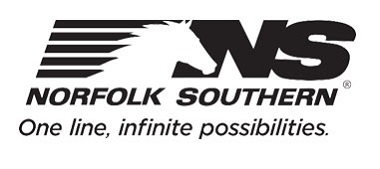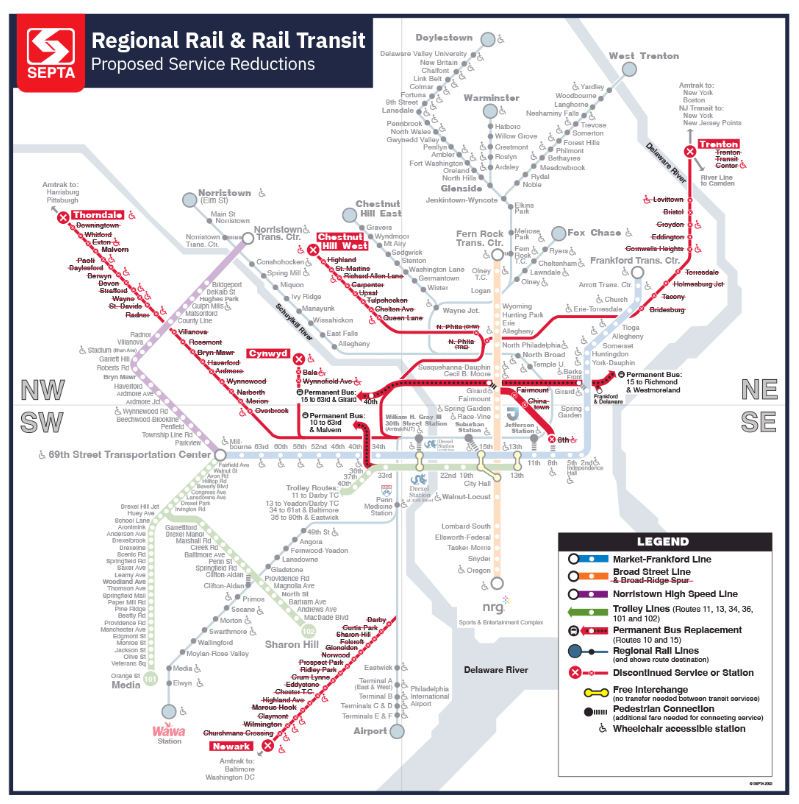“It is one big network cutover,” CEO Jim Squires told an investor conference today.
The TOP21 plan, based on the principles of Precision Scheduled Railroading, will initially affect Norfolk Southern’s merchandise, automotive, and bulk networks. The intermodal network will get a makeover next year.
“When you really cut through it all, the essence of TOP21 is run longer, heavier trains — and fewer of them,” Squires says. “So we will see train starts come down and train lengths and weights increase. And that has lots of beneficial effects on costs, including fewer crew starts, improved fuel efficiency, and lower equipment rents, for example.”
Crews are being trained to set up and use distributed power in advance of the July start of the new operating plan, which builds upon the clean-sheeting process NS used over the past 18 months to redesign yard and local service.
“At the local operations level, the big to-do connected to TOP21 is learning how to operate distributed power trains,” Squires says, noting that spreading power throughout the train is necessary for NS to significantly increase train length.
“We don’t have a lot of experience with DP. We have run DP trains, but it’s not a core skill,” Squires explains. “So we’re doing a lot of training in the field on how to assemble a DP train and how to operate it over the road.”
“We will be increasing the number of DP trains right off the bat with implementation,” Squires adds. “As time goes by, we will roll out more and more DP on the network.”
TOP21 will bring traffic increases to some areas of the NS system, including Harrisburg, Pa., Elkhart, Ind., and Chattanooga, Tenn., Squires says.
In some locations, NS has turned on the new plan early.
“We anticipate heavier traffic volumes into and out of Harrisburg. Seeing that coming, believing that we had the capability to handle those increased traffic flows already, we went ahead and implemented that node in the TOP21 plan,” Squires says. “So we’ve been we’ve been sort of easing our way into it at certain locations. The big trigger will be in July.”
NS is hosting town hall meetings that include operating employee and customers. NS also is meeting individually with about 250 shippers. The goal is to communicate the coming changes of the operating plan, Squires says.
“We believe that we will be able to implement TOP21 with a minimum of network disruption,” Squires says. “That is our goal.”
The majority of customers should see improved transit times and more reliable service, Squires says.
Next year, after NS has experience running the new plan, the railroad will turn its focus to rationalizing yards that may no longer be needed.
Clean-sheeting and TOP21 de-emphasize the use of major terminals in favor of pre-blocking at customer locations and local service yards. The new operating plan relies more on trains block-swapping en route to minimize intermediate switching, which can reduce transit time and improve service reliability.
The railroad announced details about its PSR-based operating plan during an investor day in February, including changes to local service and its locomotive fleet amid a drive toward a 60% operating ratio.
Squires spoke today at the UBS Global Industrials and Transportation Conference.















I feel sorry for the customers. I’ve heard from NS customers what they really think of PSR, but unfortunately it’s all about the shareholder, customers mean nothing
Thus far, for those thinking PSR will be a blessing, the talk in the transportation community is that railroad service still lacks consistency. Certainly there could be some service improvements for some customers. Time will tell as Paul observes and if the advantage of PSR will be an overall game changer for the railroads. This country still needs truly transcontinental railroads under one flag. If done correctly, I think the shipping community would be surprised at the results and provide a host of new market combinations. However, beyond the artificial constraints imposed by the STB, the railroads are currently in a comfortable financial position, why rock the boat.
When i went to work yesterday on my scoot run, I passed a 15000 foot dead manifest at 6am stopped 30 miles west of Proviso. When I went west last night on my final run of the day i passed that same manifest at 620pm finally moving. Hey, at least it doesnt show as dwell time because the train was not in the yard! I have wondered about the same thing. 8hrs to put a 10 or 12000 footer together which more than likely will involve a recrew because the first crew will not even get close to their AFHT before croaking. Then, between origin and final destination it sits behind other trains waiting to set out in the same yards it needs to, possibly involving yet another recrew. So a train can lose 20hrs getting built and sitting waiting to set out in satellite yards along the way, but the railroad says “Hey the cars would have sat 24hrs in another yard so we have a net gain of 4hrs in transit time!” I know I am oversimplifying here, but this is what I am seeing out there on big yellow, and kind of what Paul is saying. So is this what NS has to look forward to?
NS may have some experience with distributed power in some districts, but across their entire network they will really have to keep an eye on things if they don’t want train break-aparts to increase.
No, Charlies, we aren’t imagining anything. There were actual pictures taken of #152/153 (?) between Alexandria and Atlanta running with distributed power. Only it was called “mid-train” power then. The illusion of progress can be created by giving something old a new name.
The jury is still out and the devil is in the details, but if the extra time used for preblocking and accumulating freight for the long trains at origin is less than the time saved by replacing one or more intermediate classification cycles at 24 hours each then net terminal dwell and overall originating yard to serving yard car velocity should improve. And if the trains run daily (supplemented with bulk or international intermodal or vehicle traffic on low traffic days) and connect to locals that run daily, trip plan variance should improve.
This all assumes adequate crew availability, lower incidences of en route failures, sufficient and reliable HPT to make the train schedules and this block swap
connections, and sufficiently long passing sidings and yard leads where block swaps happen. None of which I’m convinced yet is the case.
Jeffrey:
“The illusion of progress can be created by giving something old a new name.” So True!
“We don’t have a lot of experience with DP. We have run DP trains, but it’s not a core skill,” Squires explains. “So we’re doing a lot of training in the field on how to assemble a DP train and how to operate it over the road.”
I guess all those radio trains that I set up the radio codes on at Chattanooga in 1976 and 1977 were a figment of my imagination. Oh, wait that was the Southern Railway.
Gerald; as a recently retired (last Friday, as a matter of fact) NS customer who had three plants served by NS – none of which have been changed to seven day a week service – I’ll assume your comments were made with tongue firmly in cheek.
Somebody should get the popcorn popping… the service meltdowns are about to begin!
Curt and Robert, neither of you can see how it works in favor of customer service because you both have tunnel vision and don’t see the big picture. Read between the lines and you’ll see that the ground work for those longer trains has already been put in place with the clean-sheeting process to local services and yards. If you paid attention to that most customers have had their local service increased from 5 days per week to 7 days per week, which means those local yards have already been doing preparing for this over the last 18 months. All that is really happening is that those local yards that have been generating multiple trains per day for the same business will now start taking those multiple trains and combining them into longer heavier trains of the existing carloads.
Well, people have been complaining about short-term thinking caused by institutional ownership of public companies since I’ve been paying attention to the news (which is about 45 years).
There’s not much to do but watch the cycle play out. On the bright side, maybe in another 30 years the railroads will be nearly irrelevant and the surviving railroad mileage can be taken over by the government and run like the public highways. Too bad it wasn’t done in the `70’s, but that’s the best we can hope for.
Until ALL the country’s transportation infrastructure is treated (roughly) the same, the “for profit” railroad infrastructure is going to slowly dwindle away.
Robert; neither can I. To build the longer, heavier trains mentioned, logic would indicate that some freight must be delayed in order to build the longer train. And doing that would, one would think, result in longer transit times to some NS customers and increased equipment rent to NS.
And I’m gonna bet that NS doesn’t wait till next year to begin rationalizing yards. Given Wall Streets impatience for implementing changes that theoretically will drive down the OR; I don’t see NS being given that kind of grace period.
The genie is out of the bottle now and it will be damn near impossible to squeeze him back in anytime soon.
Oh, boy. Just flipping a switch? Original TOP was phased in over many months to avoid large transient effects – which are almost impossible to model. Also, to allow extra focus by staff on the schedules being changed. There is even less staff around now to help the changes over the bumps and bruises.
In my opinion, either the overall changes are small or this is a foolish and naive approach.
I cannot see how this PSR works in the favor of customer service. In the long haul, trucks will continue to eat the lunch of the railroads, I don’t care how much they make as the assets get stripped. You cannot provide timely service with huge trains whose rail cars will generate longer dwell times due to the time to make up these long trains. Too, wait once the bad weather hits. Lots of luck railroads. Shippers eventually default to trucking where they can because of additional complications under PSR.